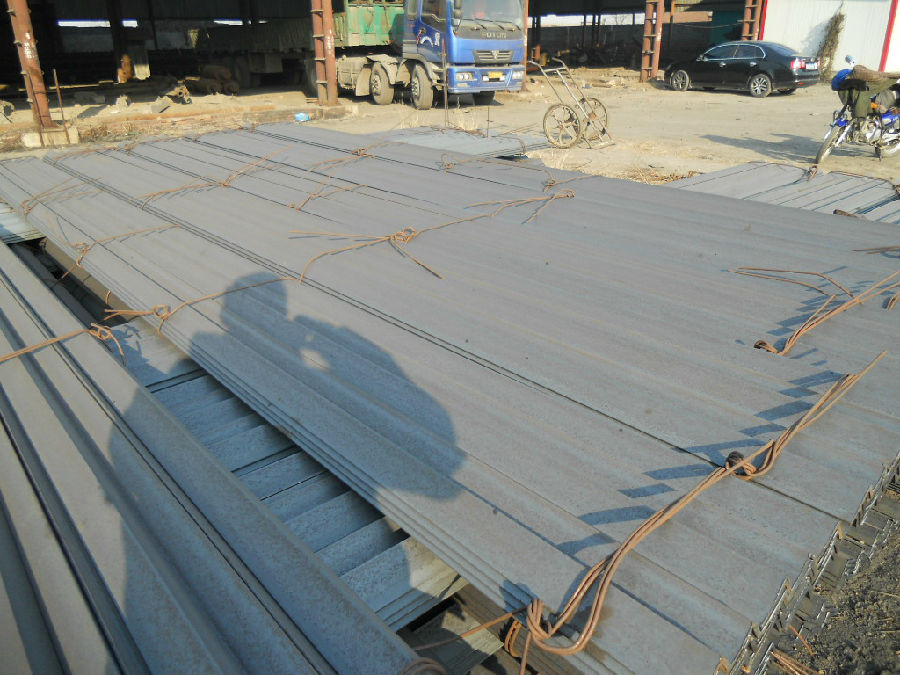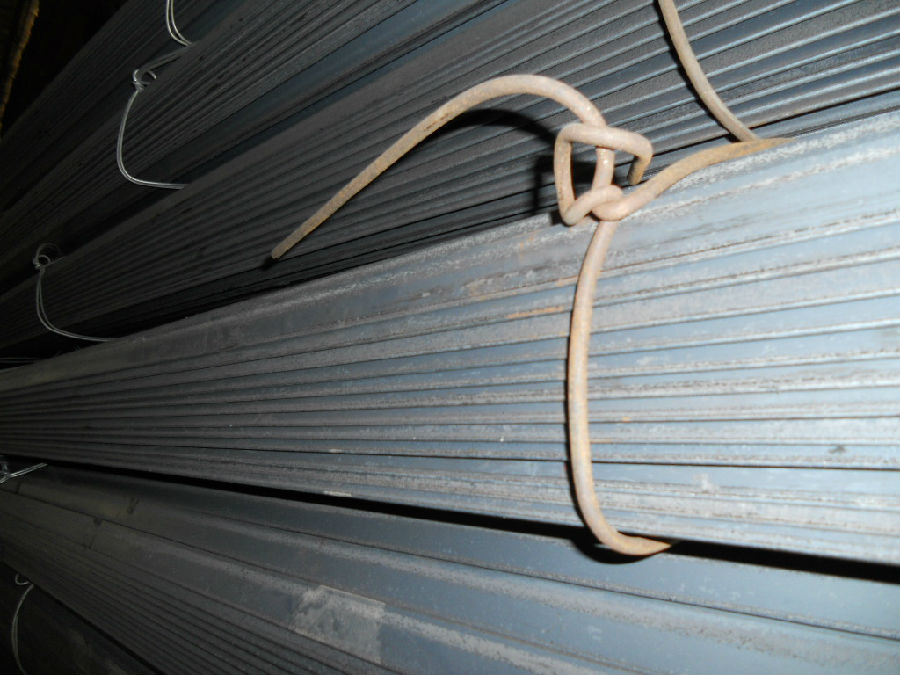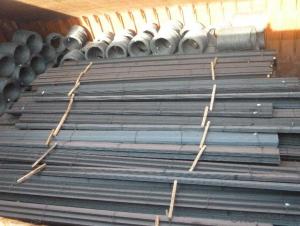angle bar equal angle steel angle steel bar angel steel
- Loading Port:
- Tianjin
- Payment Terms:
- TT OR LC
- Min Order Qty:
- 20 m.t.
- Supply Capability:
- 20000 m.t./month
OKorder Service Pledge
OKorder Financial Service
You Might Also Like
Specifications
Hot Rolled Equal/Unequal Q195-345 Angel Steel
1. High Strength;
2. Hot Rolled Technique;
3. Any quantity is available.
Working Today, Building Tomorrow!
We do care:
--Good Quality
--On-time Delivery
--Competitive Price
--Efficient After Service
galvanized angle steel ! ! ! equal angle steel angle steel bar angel steel
Products Details:
1.Standard: AISI ASTM BS DIN GB JIS
2.Dimensions:10*10mm-200*200mm
3.Grade:Q195-Q420 Series
4.Place of Origin:Tianjin,China
5.Length:6m 9m 12m or as per request
6.Application:Building structure and engineering structure, such as the beam, Bridges, transmission tower,
lifting transportation machinery, ship, industrial furnace, reaction tower, container frame and warehouse.
7.Technology:Hot Rolled / Cold Rolled
8.Packaging Detail: Mills standard export strong packing
9.Price Term:FOB/CFR/CIF,According to clients requirements
10.Delivery Datail:7-10 Workdays after deposit
11.MOQ:25MT
12.Payment:T/T or LC
13.12.Authentication:ISO9001-2008,SGS.BV
Products Material:
Q195-Q420 Series
SS400-SS540 Series
S235JR-S355JR Series
ST Series
A36-A992 Series
Gr50 Series



- Q:Can steel angles be painted or coated for aesthetic purposes?
- Yes, steel angles can be painted or coated for aesthetic purposes. Painting or coating steel angles can enhance their appearance and provide protection against corrosion. The process usually involves cleaning the surface of the steel angles to remove any dirt, oil, or rust, and then applying a primer and paint or a specialized coating. The choice of paint or coating will depend on the desired aesthetic and the environmental conditions the steel angles will be exposed to. By painting or coating steel angles, they can be customized to match the surrounding decor or architectural design, making them more visually appealing and blending seamlessly into the overall aesthetic.
- Q:Are there any limitations or restrictions on the use of steel angles?
- Yes, there are some limitations and restrictions on the use of steel angles. One limitation is the maximum load capacity they can bear. Steel angles have a specific load-bearing capacity based on their size, shape, and material composition. Exceeding this capacity can lead to structural failure or collapse. Another limitation is related to the angle's installation and fixing methods. Steel angles are typically secured using welding, bolting, or other fastening techniques. The strength and effectiveness of these methods can be influenced by factors such as the quality of the weld or the type of fastener used. It is important to follow proper installation procedures and adhere to recommended guidelines to ensure the angles are securely attached. Furthermore, steel angles may have restrictions on their use in certain environments or applications. For example, steel angles may not be suitable for use in highly corrosive environments without appropriate protective coatings or materials. Similarly, in applications where fire resistance is crucial, steel angles may need to be treated with fire-resistant coatings or replaced with other fire-resistant materials. Additionally, the dimensions and lengths of steel angles can impose limitations on their use. Steel angles are available in various sizes and lengths, and these dimensions should be selected carefully to meet the specific requirements of a project. It is important to consider factors such as the load distribution, span length, and overall structural design to ensure the chosen steel angles are appropriate for the intended application. In summary, while steel angles are versatile and widely used in various construction and engineering applications, there are limitations and restrictions to be aware of. These include load-bearing capacity, installation methods, environmental considerations, and dimensional constraints. It is essential to consult with structural engineers, follow industry standards, and ensure proper planning and implementation to ensure the safe and effective use of steel angles.
- Q:Can steel angles be used for underground or subterranean structures?
- Steel angles have the capability to be utilized in underground or subterranean structures. They possess versatility and are commonly employed in construction primarily because of their sturdy nature, durability, and ability to endure high levels of stress. Within underground or subterranean structures, the applications of steel angles are numerous. For instance, they can provide structural support, reinforce concrete walls or floors, or establish framing systems. Steel angles are also appropriate for retaining walls, tunnel linings, underground parking structures, and underground utility tunnels. To further enhance their resistance against corrosion, steel angles can undergo various coatings or treatments. This feature ensures their suitability for underground environments where moisture, soil, or other corrosive elements may be present. In conclusion, due to their strength, adaptability, and resistance to various environmental factors, steel angles are a dependable and efficient choice for underground or subterranean structures.
- Q:What are the different types of steel angles used in construction?
- There are several types of steel angles commonly used in construction, including equal angles, unequal angles, L-shaped angles, and T-shaped angles. These angles are used to provide structural support, reinforcement, and stability in various building applications.
- Q:What are the different types of steel angles used in manufacturing?
- There are several types of steel angles commonly used in manufacturing, including equal angles, unequal angles, L-shaped angles, and T-shaped angles. These angles are used in various industries and applications, such as construction, engineering, and manufacturing of machinery and equipment.
- Q:Can steel angles be used in the construction of solar panel support structures?
- Yes, steel angles can be used in the construction of solar panel support structures. Steel angles provide structural support and stability, making them suitable for holding solar panels in place and withstanding various weather conditions.
- Q:Are steel angles suitable for earthquake-prone areas?
- Steel angles are commonly used in construction, particularly in earthquake-prone areas, due to their excellent structural properties. The L-shaped design of steel angles provides significant stability and strength, making them suitable for withstanding seismic forces. Steel angles are known for their high tensile strength and ability to resist bending and twisting, which is crucial during an earthquake. Additionally, steel is a ductile material, meaning it can undergo significant deformation without undergoing failure, thus absorbing some of the energy generated by seismic activity. This flexibility helps to prevent catastrophic structural collapse during an earthquake. Furthermore, steel angles can be easily bolted or welded together, allowing for efficient and cost-effective construction. However, it is important to note that the design and construction of structures in earthquake-prone areas should be done in accordance with local building codes and regulations to ensure maximum safety.
- Q:How do you calculate the shear strength of a steel angle?
- To calculate the shear strength of a steel angle, you need to determine the area of the cross-section multiplied by the shear stress limit of the material. The shear stress limit can be obtained from the material's specifications or testing.
- Q:Can steel angles be used for manufacturing playground equipment?
- Yes, steel angles can be used for manufacturing playground equipment. Steel angles provide strength and stability, making them suitable for constructing various playground structures such as slides, swings, and climbing frames.
- Q:What is the maximum length for a steel angle?
- The maximum length for a steel angle can vary depending on the specific type and size of the angle, as well as the manufacturing capabilities of the steel supplier. Generally, steel angles are available in standard lengths ranging from 20 feet to 40 feet. However, longer lengths may be possible through custom orders or special production processes. It is recommended to consult with a steel supplier or manufacturer to determine the maximum length that is readily available or can be obtained for a specific type of steel angle.
1. Manufacturer Overview |
|
|---|---|
| Location | |
| Year Established | |
| Annual Output Value | |
| Main Markets | |
| Company Certifications | |
2. Manufacturer Certificates |
|
|---|---|
| a) Certification Name | |
| Range | |
| Reference | |
| Validity Period | |
3. Manufacturer Capability |
|
|---|---|
| a)Trade Capacity | |
| Nearest Port | |
| Export Percentage | |
| No.of Employees in Trade Department | |
| Language Spoken: | |
| b)Factory Information | |
| Factory Size: | |
| No. of Production Lines | |
| Contract Manufacturing | |
| Product Price Range | |
Send your message to us
angle bar equal angle steel angle steel bar angel steel
- Loading Port:
- Tianjin
- Payment Terms:
- TT OR LC
- Min Order Qty:
- 20 m.t.
- Supply Capability:
- 20000 m.t./month
OKorder Service Pledge
OKorder Financial Service
Similar products
New products
Hot products
Related keywords




























